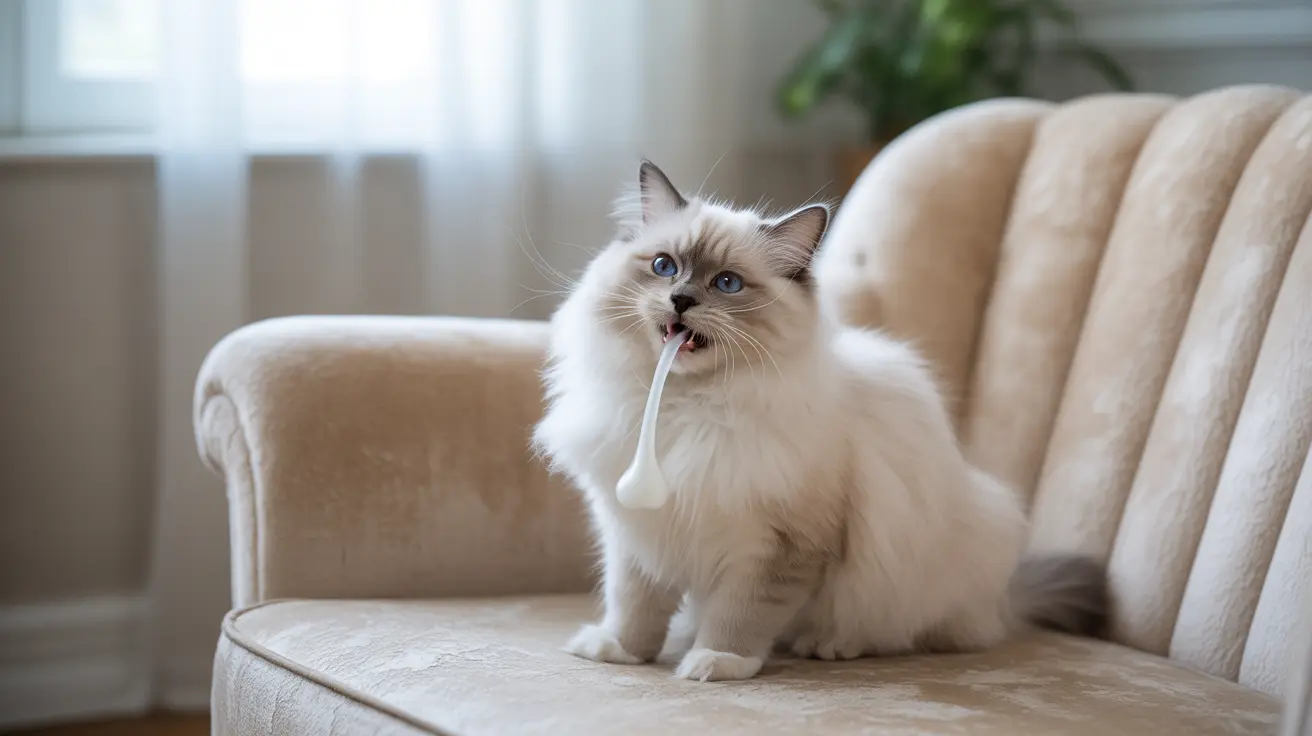Understanding When to Worry About a Cat's Third Eyelid
Cats possess a unique anatomical feature known as the
third eyelid, or
nictitating membrane. This translucent tissue serves several important roles in eye health, acting as a protective barrier and contributing to tear production. While this membrane is usually discreet and not visible under normal circumstances, there are times when it becomes noticeable. Understanding
when a cat's third eyelid shows — and more importantly, when it signals an underlying issue — is essential to maintaining your pet’s ocular and overall health.
What Is the Third Eyelid?
The third eyelid is a fold of tissue located in the inner corner of a cat’s eye, near the nose. It moves across the eye horizontally, unlike the upper and lower eyelids. This structure serves multiple functions:
- Protects the eye during activity or sleep
- Moisturizes the cornea by contributing to tear film production
- Protects against foreign debris and infections
Most healthy cats will rarely show their third eyelid when awake and alert. Transient visibility might occur during sleep or after anesthesia — this is typically normal.
When Is It Normal to See the Third Eyelid?
Sometimes, a cat's third eyelid becomes momentarily visible for non-threatening reasons, such as:
- Just waking up or falling asleep
- Recovery following sedation
- During a yawn or moment of deep relaxation
In these cases, the visibility is brief and not associated with other symptoms.
Signs That Warrant Concern
Persistent or bilateral elevation of the third eyelids may signal a medical problem. Take your cat to the vet if the third eyelid is visible for more than a few hours or if it’s accompanied by:
- Eye discharge (clear, yellow, green)
- Redness or swelling in or around the eye
- Squinting or holding the eye shut
- Cloudiness or change in eye color
- Pawing at the face or rubbing the head on furniture
- Behavioral changes or signs of discomfort
Medical Causes of Third Eyelid Protrusion
A visible third eyelid can indicate various underlying conditions:
1. Eye Injuries or Irritation
- **Corneal ulcers**
- **Scratches** from objects or playing
- **Foreign particles** trapped in the eye
2. Infections
- **Conjunctivitis** caused by viruses, bacteria, or fungi
- **Upper respiratory infections** that spread to the eyes
3. Cherry Eye
Occurs when the gland of the third eyelid prolapses, appearing as a red or pink mass. This condition often requires surgical correction to maintain tear function.
4. Haws Syndrome
Characterized by symmetrical elevation of both third eyelids without primary eye disease. Often linked to gastrointestinal distress and typically resolves without treatment.
5. Neurological Issues
- **Horner’s Syndrome**: includes signs like drooping eyelid, constricted pupil, and retracted eye
- **Facial or neck nerve damage** can also cause elevation
6. Systemic Illness
- **Fever**
- **Dehydration**
- **Weight loss**
- **Severe underlying illness**
7. Allergic Reactions or Chemical Exposure
Inflammation from allergens, smoke, or substances like cleaning agents may cause third eyelid protrusion.
Diagnosis and Veterinary Evaluation
Your vet will determine the cause through a series of diagnostic tests such as:
- Ophthalmoscopic eye examination
- Fluorescein staining (for ulcers or abrasions)
- Tear production measurement
- Intraocular pressure readings
- Phenylephrine stimulation for identifying Horner’s or Haws syndrome
- Blood tests and urinalysis
- Imaging if systemic or neurological issues are suspected
Treatment Options
Treatment varies depending on the diagnosis:
- Minor causes (sleep, sedation, mild GI upset): may resolve naturally
- Injuries or infections: treated with topical or oral medications
- Cherry Eye: requires surgical repositioning
- Neurological conditions: may resolve spontaneously or need targeted treatment
- Conjunctivitis: treated with antimicrobial and anti-inflammatory medication
Home Care and Prevention
While all persistent third eyelid protrusions should be checked by a vet, some supportive measures include:
- Wipe away discharge gently with a clean, moist cotton ball
- Avoid using human eye drops or medications
To prevent eye issues:
- Conduct regular eye inspections
- Keep your cat's environment clean
- Trim nails to avoid self-injury
- Supervise interactions with other pets
- Keep cats indoors to limit exposure to hazards
- Isolate new cats until they are vet-checked
Conclusion
A cat's visible third eyelid can be a benign, short-lived occurrence or a sign of deeper health issues. Prompt veterinary care is crucial when the membrane remains elevated or is accompanied by other symptoms. With vigilant observation and timely action, you can protect your cat’s vision and overall health.





